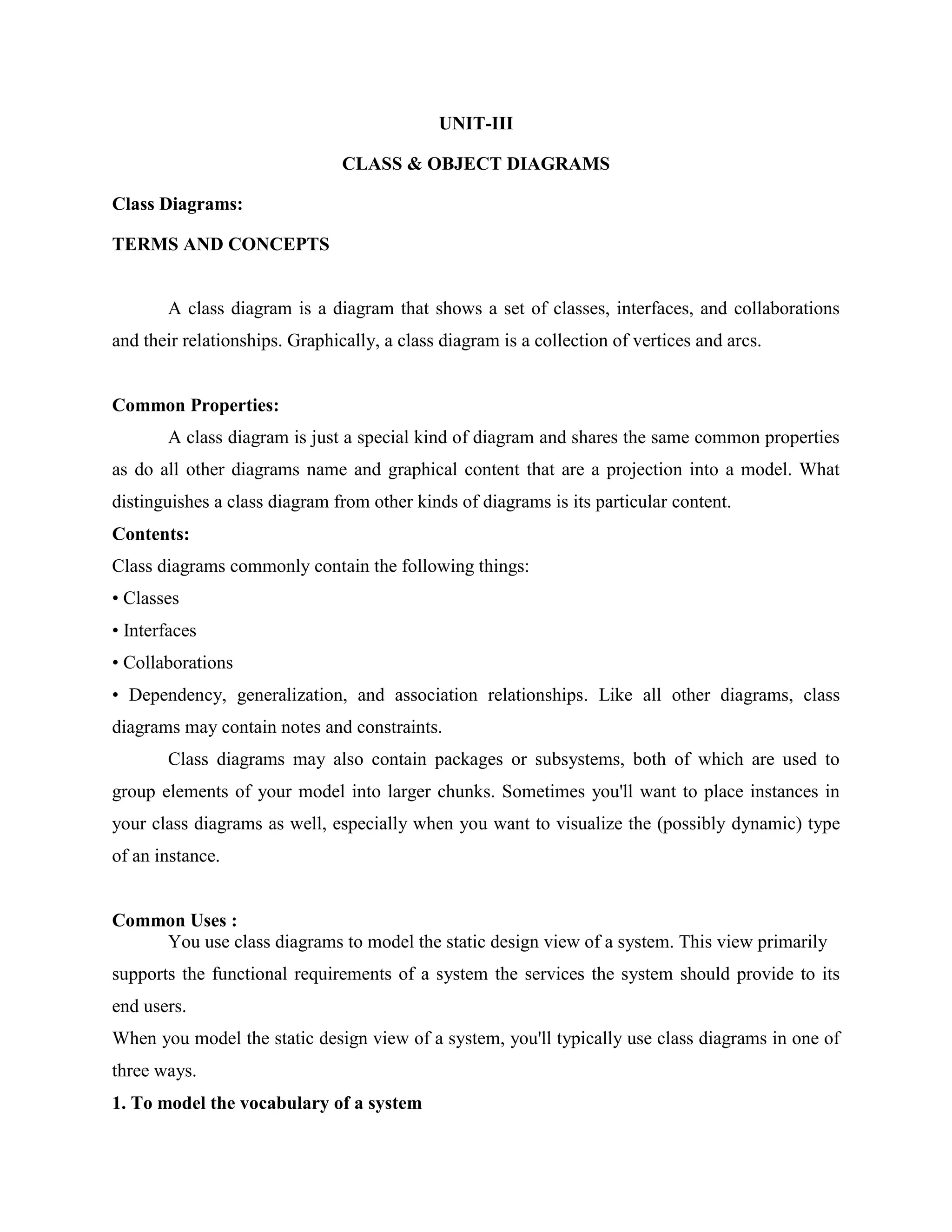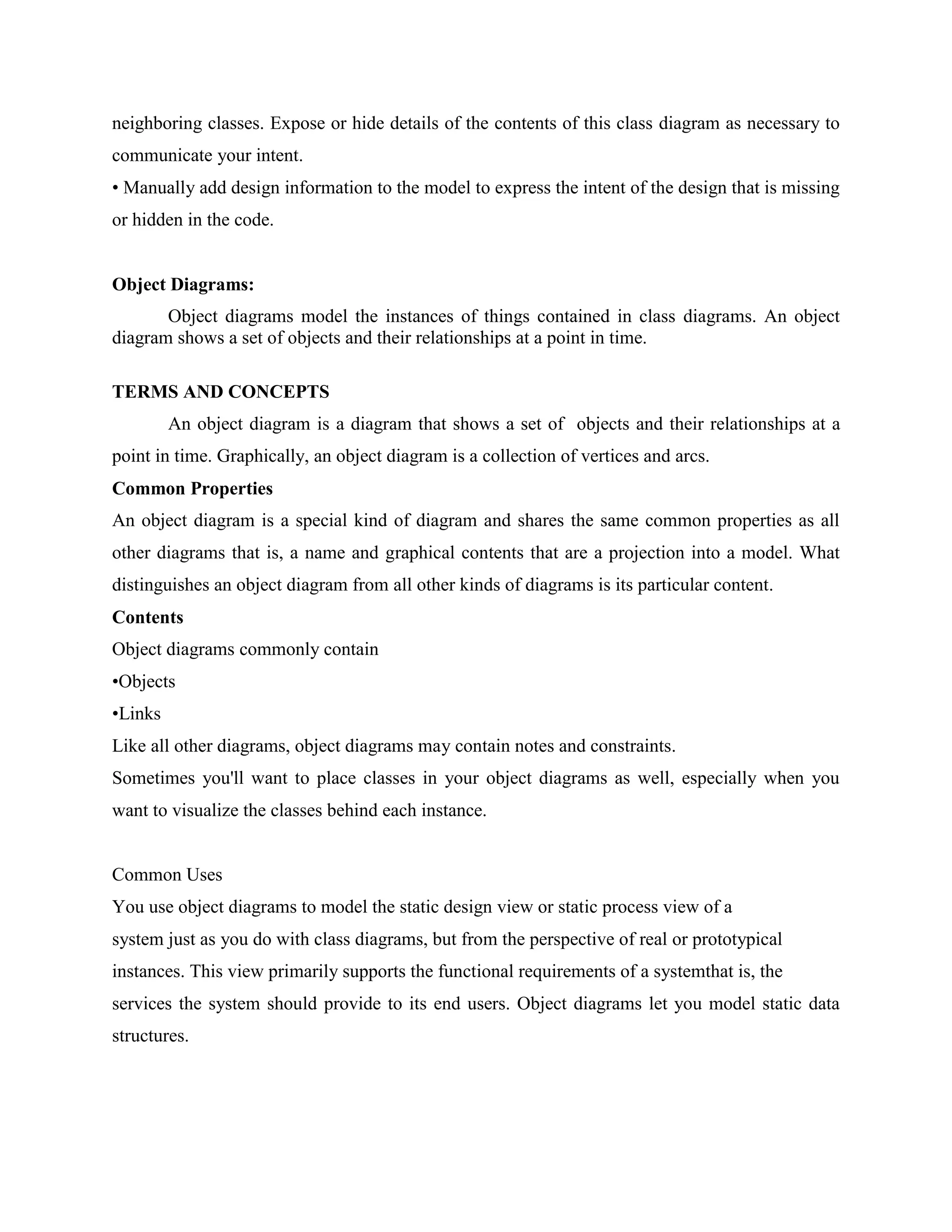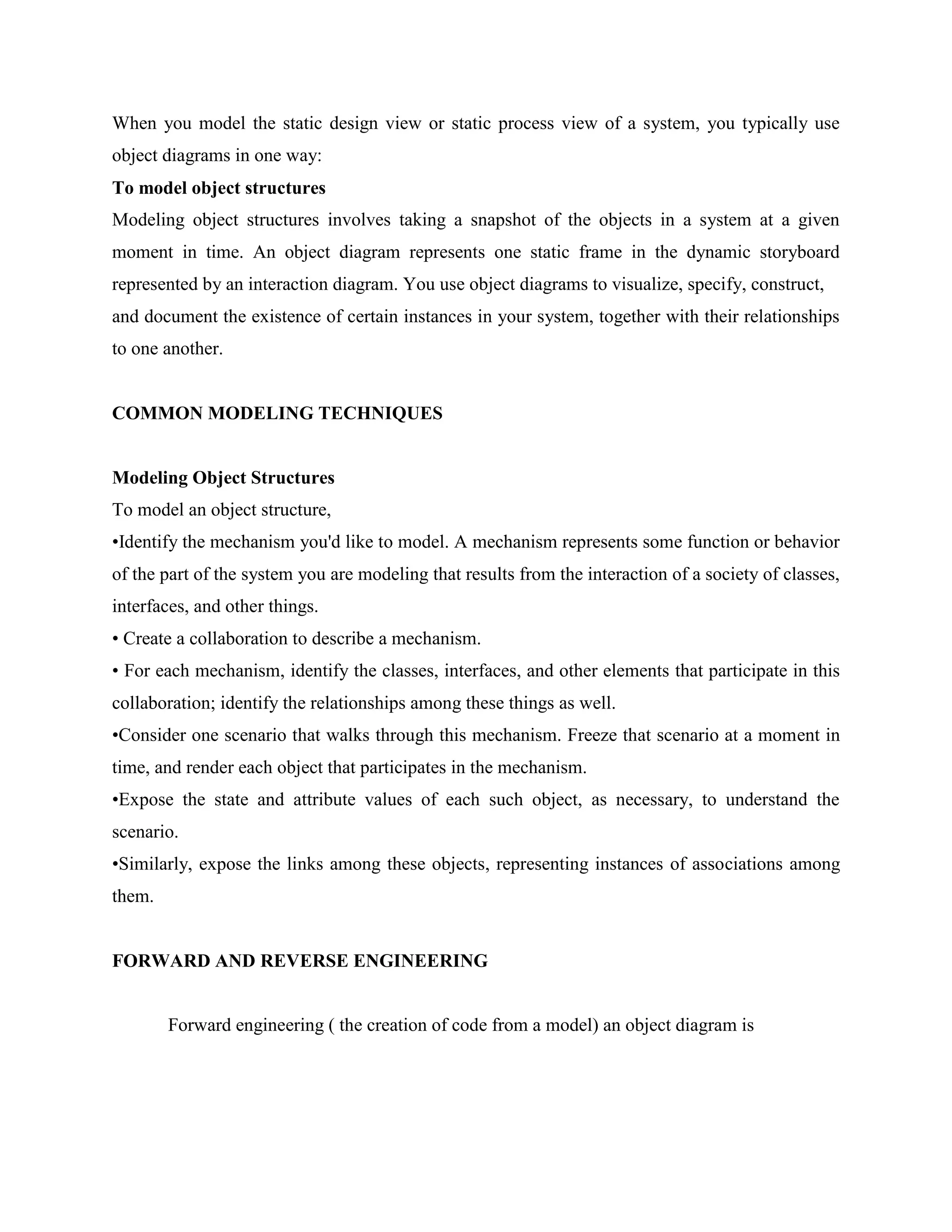The document explains class and object diagrams as tools for modeling the static design view of a system, detailing their contents, common uses, and modeling techniques. Class diagrams represent classes, interfaces, and relationships, while object diagrams focus on specific instances and their relationships at a moment in time. It also covers forward and reverse engineering processes associated with these diagrams, emphasizing the importance of modeling for effective system design and implementation.






